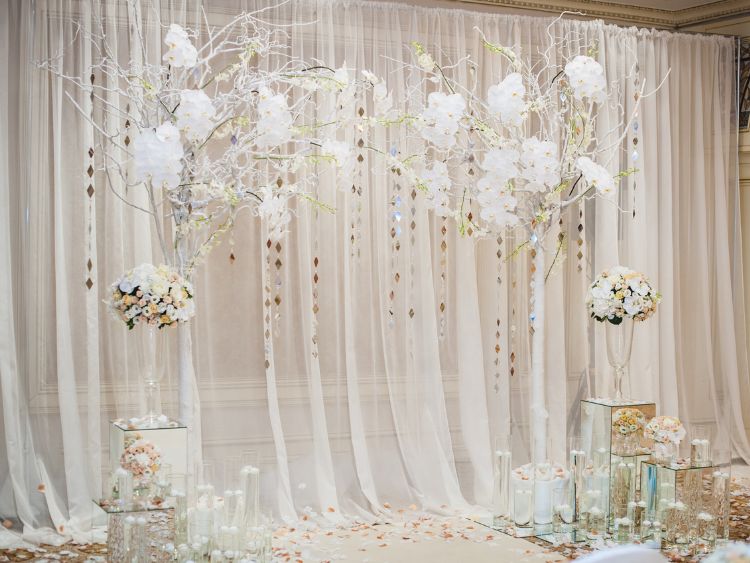White Tie Event: The Pinnacle of Formality
What Is a White Tie Event?
When it comes to formal dress codes, nothing surpasses the grandeur of a white tie event. This level of formality is reserved for the most prestigious occasions—think royal galas, state dinners, and high-society weddings. But what exactly defines a white tie event, and how does one prepare for it? In this comprehensive guide, we’ll explore the ins and outs of white tie attire, the history behind it, and what you need to know if you ever find yourself invited to such an event.
The Origins of the White Tie Dress Code
White tie has a rich history, dating back to the early 19th century. Originating in the aristocratic circles of Europe, it was a standard for evening attire among the elite. Over time, it became synonymous with the utmost level of elegance and sophistication. While the black tie dress code is more commonly known today, white tie remains the gold standard for formal wear.
Key Elements of White Tie Attire
Understanding what to wear to a white tie event is crucial. The dress code is highly specific, and there’s little room for deviation. Here’s what you’ll need:
- Tailcoat: A black tailcoat is the centerpiece of a white tie ensemble. It’s cut short at the front and long at the back, with the tails typically extending to the knee.
- White Waistcoat: The waistcoat must be white and is typically made of pique fabric. It should cover the waistband of the trousers and remain partially visible when the coat is buttoned.
- White Wing-Collared Shirt: The shirt should have a stiff, winged collar and be made of a fine cotton fabric. It’s usually paired with a white bow tie.
- Black Trousers: Trousers should be high-waisted and feature a satin stripe running down the side.
- Black Patent Leather Shoes: These should be highly polished, often in a pump or Oxford style.
- Accessories: Cufflinks, shirt studs, and a pocket watch add the finishing touches. White gloves are optional but can elevate the look.
The Etiquette of Attending a White Tie Event
Attending a white tie event isn’t just about looking the part; it’s also about adhering to a certain level of decorum. These events are steeped in tradition, and understanding the expected behavior is essential.
- Punctuality: Arriving on time is crucial. Late arrivals can be seen as disrespectful, especially at events where the timing is critical, such as state dinners or formal receptions.
- Manners: Politeness and grace are the order of the day. Remember, you’re not just representing yourself but also respecting the hosts and other guests.
- Conversation: Engage in light, respectful conversation. Avoid controversial topics, and be mindful of others’ opinions.
- Dancing: If there’s a dance, follow the lead of the host. Traditional dances, such as the waltz, are often a part of white tie events.
The Role of White Tie in Modern Society
While white tie events are less common today than in the past, they still hold a place in modern society. Royal weddings, diplomatic galas, and Nobel Prize ceremonies often call for white tie attire. Understanding this dress code can be invaluable if you’re in certain social or professional circles.
White tie events are also making a comeback in the world of high fashion. Designers often draw inspiration from this traditional dress code, bringing elements of white tie into modern evening wear collections.
White Tie vs. Black Tie: What’s the Difference?
It’s easy to confuse white tie with black tie, but they are distinctly different. While both are formal, white tie is the more formal of the two. Here’s a quick comparison:
- Formality: White tie is the highest level of formality, while black tie is a step below.
- Attire: Black tie typically involves a tuxedo, black bow tie, and a formal dress shirt. White tie, as we’ve discussed, requires more specific and elaborate attire.
- Occasions: White tie is reserved for very special occasions, while black tie is more common for evening events like galas, award ceremonies, and weddings.
Preparing for Your First White Tie Event
If you’ve never attended a white tie event, the prospect might seem daunting. However, with a little preparation, you can navigate the event with confidence. Here’s how:
- Plan Ahead: Start planning your outfit well in advance. White tie attire can be challenging to find, and you may need to have certain pieces tailored.
- Practice Makes Perfect: If you’re unfamiliar with tying a bow tie or wearing a tailcoat, practice ahead of time. You’ll feel more comfortable on the day of the event.
- Consult the Experts: Don’t hesitate to seek advice from a tailor or fashion expert. They can help ensure that your outfit is up to standard.
- Mind the Details: From polished shoes to neatly pressed garments, attention to detail is key. Ensure that every element of your outfit is in pristine condition.
- Confidence Is Key: Finally, wear your outfit with confidence. A white tie event is an opportunity to embrace tradition and elegance, so enjoy the experience.
FAQs About White Tie Events
Q: Can women wear pants to a white tie event?
A: Traditionally, women wear floor-length evening gowns to white tie events. Pantsuits are not considered appropriate.
Q: Is it ever acceptable to wear a black tie to a white tie event?
A: No, the dress code is very strict. A black tie is not a substitute for the required white bow tie.
Q: Are white tie events only for the elite?
A: While white tie events are often associated with high society, they are not exclusive to the elite. However, they are typically reserved for very formal occasions.
Q: Can I wear a colored waistcoat or bow tie to a white tie event?
A: No, the waistcoat and bow tie must be white. Colored accessories are not permitted.
Q: How do I know if an event is white tie?
A: The invitation will specify the dress code. If it says “white tie,” it’s important to adhere to the guidelines strictly.
Conclusion: Embrace the Elegance of White Tie
Attending a white tie event is a rare and special experience. It’s a chance to step into a world of elegance, tradition, and high society. By understanding the dress code and etiquette, you can make the most of the occasion and leave a lasting impression. Whether you’re attending a royal gala or a state dinner, remember that confidence and attention to detail are your best accessories.
Authoritative Links for Further Reading
- www.debretts.com/expertise/etiquette/dress-codes/white-tie/
- www.gentlemansgazette.com/white-tie-dress-code/
- www.esquire.com/style/mens-fashion/a22130850/what-is-white-tie/
- www.brides.com/white-tie-vs-black-tie-5074179
- www.nytimes.com/2020/09/21/fashion/white-tie-guide-history.html
This article should provide a comprehensive guide to white tie events, helping readers understand and appreciate the highest level of formal attire.





